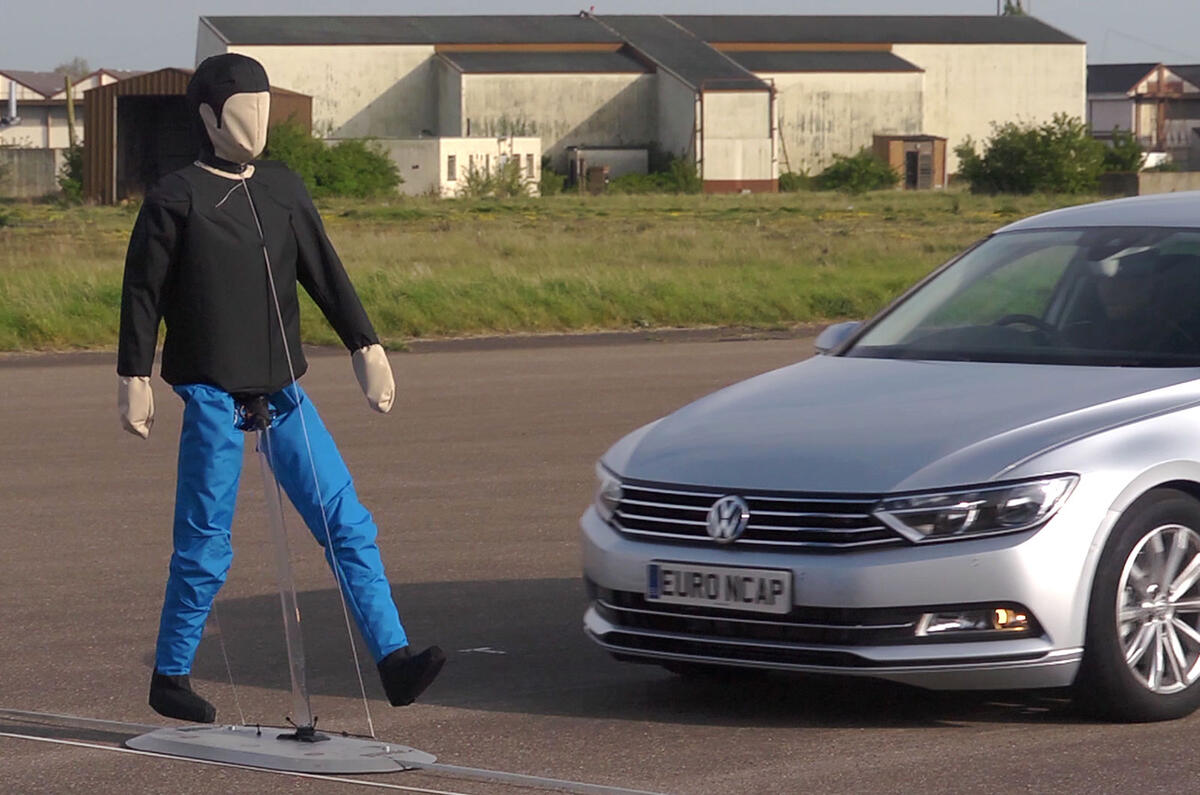Euro NCAP will begin testing pedestrian avoidance systems from 2016.
The new tests are being introduced in response to the increasing popularity of the systems, which attempt to stop a car when a collision with a pedestrian is likely.
The tests will rate the car's detection of a hazard and the car's response when a pedestrian-shaped dummy crosses its path. Three scenarios are tested: an adult walking into the path of the car, running into the path of the car, and a child walking out from behind a parked car.
Higher-scoring cars will stop from 25mph without hitting the dummies or at least reduce the speed of impact. Testing will also be carried out at speeds above 25mph up to 37mph, where the systems should reduce the speed of impact to non-fatal speeds, if not stopping the car altogether. According to NCAP, early detection, quick response and quick but firm application of the brakes are all areas in which the software could improve upon human drivers.
Michiel van Ratingen, Euro NCAP Secretary General justified the new rounds of testing, saying: “Vehicles designed to perform well in these tests will be better equipped to prevent thousands of needless deaths and life-changing injuries on our European roads. Therefore, from 2016 the rating will give credit to those vehicle models that offer this capability. At the same time, these tests will make it possible for new car buyers and fleet operators to make an informed choice.”
By Jimi Beckwith





Join the debate
Add your comment
I think this is a good test
Good idea to test, but...
Will the car have been "sold a dummy" and (over)react by emergency braking?